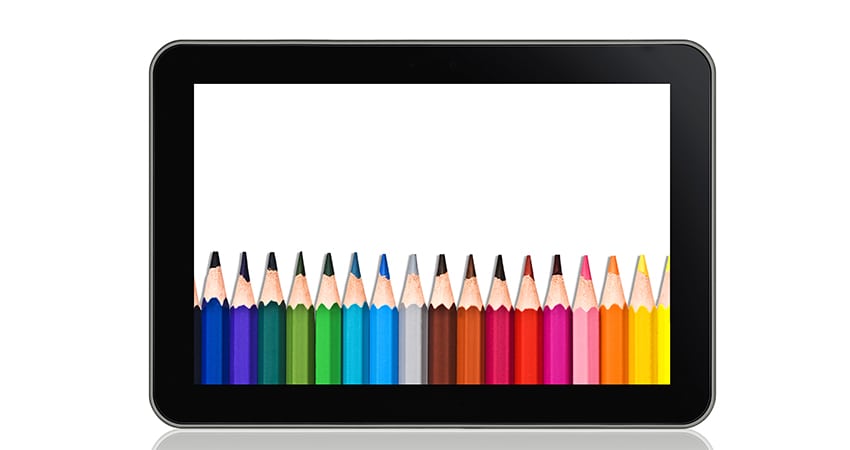The first comments from friends started weeks ago. “It’s not even the All-Star Game yet, and I’m already seeing back-to-school ads,” was a typical one. “It’s making my kids and me anxious already. Let us enjoy our summer.”
A marketer’s answer might be, “Because it’s important to advertise early and often.” That answer is warranted considering that the annual back-to-school pilgrimage each fall represents the second-largest shopping season of the year, according to Deloitte.
This is further underscored by another reality: In many parts of the country, school starts earlier and earlier—sometimes as early as the first week of August. Plus, the nature of what is categorized as a B2S good has evolved—and is continually expanding.
An example of this can be observed in the home retailer space. College dorm rooms now sometimes resemble pages out of a home design magazine with varying décor, window treatments and textiles. What happened to the cinder block wall, shared bathroom dorm or traditional post-Labor Day school start, anyway?
Households Will Keep Spending through September
When you consider that the National Retail Federation projects B2S shopping spend in the U.S. to reach $82.8 billion this year, coupled with the fact that the average household spend is $510, it’s a wonder that advertising doesn’t begin in June, or never stops at all.
Here’s why it’s important to advertise late and often: NRF research indicates that back-to-school shopping behavior is truly seasonal. In fact, most parents in the U.S. wait until August regardless of when classes actually begin in their area, and as much as 30 percent of the $82.8 billion projected for back to school still remains to be spent.
According to the NRF’s annual survey from 2016, by early August:
- The average family with K-12 children traditionally completes only about half (48%) of its back-to-school shopping
- Almost 25% haven’t even started their shopping
- Only 13% have already completed their shopping lists
In other words, as a brand advertiser, you still have time. August and early September is not at all too late to conduct back-to-school advertising. And if you’re strategic about it by intelligently choosing when, who, where and how to advertise, you can achieve an even higher ROI for those advertising dollars.
The Bull’s-Eye: Three Targeted Audiences to Hit
So, let’s be strategic about it. Acxiom Audience Propensities research suggests marketers should tailor their messages according to the following information:
- Late Shoppers Who Have a Full House. Families who tend to have multiple children (ages 11-17), own their own homes, have dual incomes and travel more are late to the shopping game. Retailers should customize their messaging, creative and promotions to make advertising more applicable to this group. Also, consider making it as easy as possible for them to buy, because their time is a valuable asset.
- Breaking Down Amazon Prime Shopper Geographies. Families in Designated Market Areas (DMAs) Charlottesville, VA, Washington, D.C., the San Francisco Bay area, Bend, OR, Baltimore, Santa Barbara, San Diego and Los Angeles are more likely to be Amazon Prime subscribers who purchase school supplies in August and early September. As many as 2.5 million households fall into this group and are more receptive to mobile and internet advertising, so tune your advertising appropriately.
- Cable Isn’t Dead. At least not for families in DMAs who are not as likely to be Amazon Prime subscribers, such as those in Chicago or Detroit. They are more receptive to targeted television advertising (28.8% daytime TV, 35% prime time TV) as well as newspaper ads/inserts (20.4%). Once again, present your message or offer where your audience is, not your channel of choice.
Brick-and-Mortar is Still King
Something else to keep in mind comes from Deloitte’s 2018 Back-to-School Survey, which reveals that more than half of the average household’s annual spend ($292, representing $15.7 billion) will occur in stores as opposed to online. Additionally, an NRF survey found that shoppers who are late to filling out their back-to-school lists are most likely to purchase school supplies (77%), clothing (70%) and shoes (57%) in store versus online.
The takeaway? When it comes to back to school, brands should advertise early, late and most importantly, often. Applying strategic insights like those shared above will only equate to more personalized and successful messaging.
Now, you can start preparing responses when friends ask why they started seeing Halloween ads or candy in stores in mid-August. Pro tip: Before answering, soften them up with a pumpkin spice latte. Or candy corn.
Drew May is Group Vice President of Sales & Client Services at Acxiom

